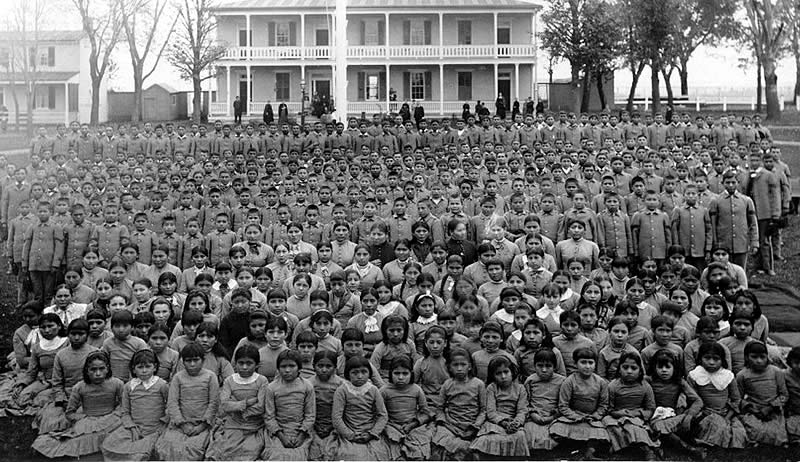
Native-American students attending a reservation school at the turn of the 20th century.
[The image is in the public domain.]
Copyright 2014 © Laraine Flemming.
Distribution and redistribution for commercial purposes are strictly prohibited.
Use for non-commercial educational purposes is permitted, provided that this copyright notice is not removed.
As a courtesy, please notify us if you link to our site.
In its most common meaning, assimilation refers to the process whereby a member of a minority group gradually adopts the customs or attitudes of the majority culture (sentences 1, 3, and 5). The word can also describe the way in which we mentally record and remember new information (sentences 2 and 4)
Memory Peg.To remember the main meaning of assimilation, think of the late nineteenth-century treatment of Native-Americans who were subjected to forced assimilation. Their children were sent to reservation schools, where they had to wear white people’s clothing and were severely punished for speaking their own language (see the photo below). To remember the second meaning, attach it to its much simpler synonym, which is "learn." Consider what strategies you use to learn new information and connect those same strategies to assimilation.

Native-American students attending a reservation school at the turn of the 20th century.
[The image is in the public domain.]
Specialized Use in Biology. Biological assimilation refers to the process by which animals and plants absorb nutrients from the environment so that they can be used to build living tissue. In plants, it is sap that carries the nutrients to plant cells. In animals, biological assimilation is the step that follows digestion, which breaks complex substances down into simpler, more absorbable forms. Then the blood stream carries these more absorbable food forms to the body’s cells.
1. Which of the following sentences uses assimilation correctly?
Last update of this page: April 22, 2014